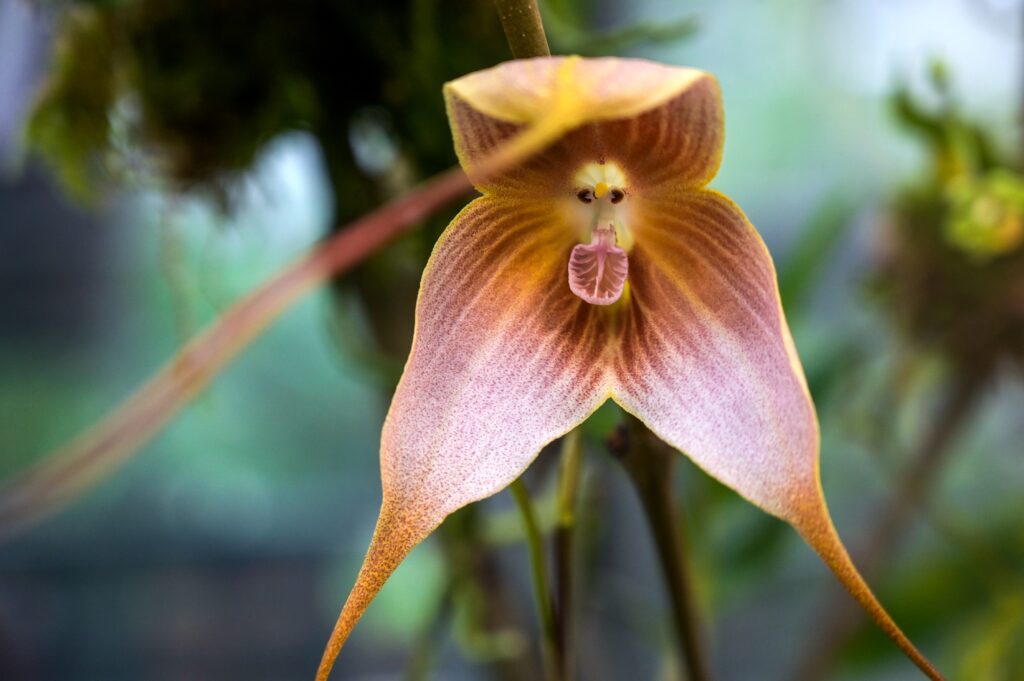It’s a common childhood pastime to gaze up at the clouds and point out puffy shapes that look like animals. Another element of nature that can spark your imagination? Plants.
Gaze at the greenery and flowers below and you’ll see them transform into jellyfish, butterflies, and bunny ears. Tilt your head and parrots and doves may emerge.
There’s a name for this phenomenon: pareidolia, or the tendency to see faces and other images in random visual patterns. According to the University of California, Berkeley’s Greater Good Magazine, pareidolia can help us enhance our creativity and cultivate a tolerance for ambiguity, which is often difficult to accept.
Scroll down to check out the animal look-alikes, and keep an eye out for flowers that resemble other things on your next walk. Your creativity will thank you!
Parrot Flower (Impatiens Psittacina)
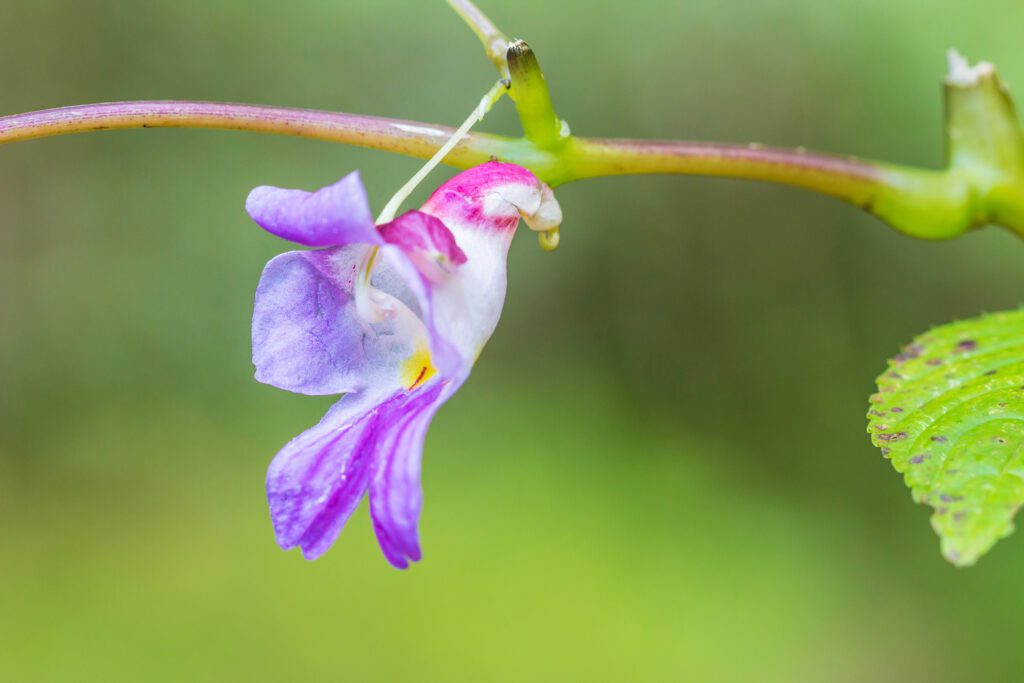

If you look at these pretty flowers from a certain angle, they resemble lovely flying parrots. Their scientific name is Impatiens psittacina, Latin for “parrot-like,” and they’re found in Thailand, Myanmar, and India, per Kew Gardens
Fun fact: In an academic journal published in 1901, botanist Joseph Dalton Hooker described the flower as resembling “a cockatoo suspended by a string from the shoulders.” Do you see it?
Dove Orchid (Peristeria Elata)
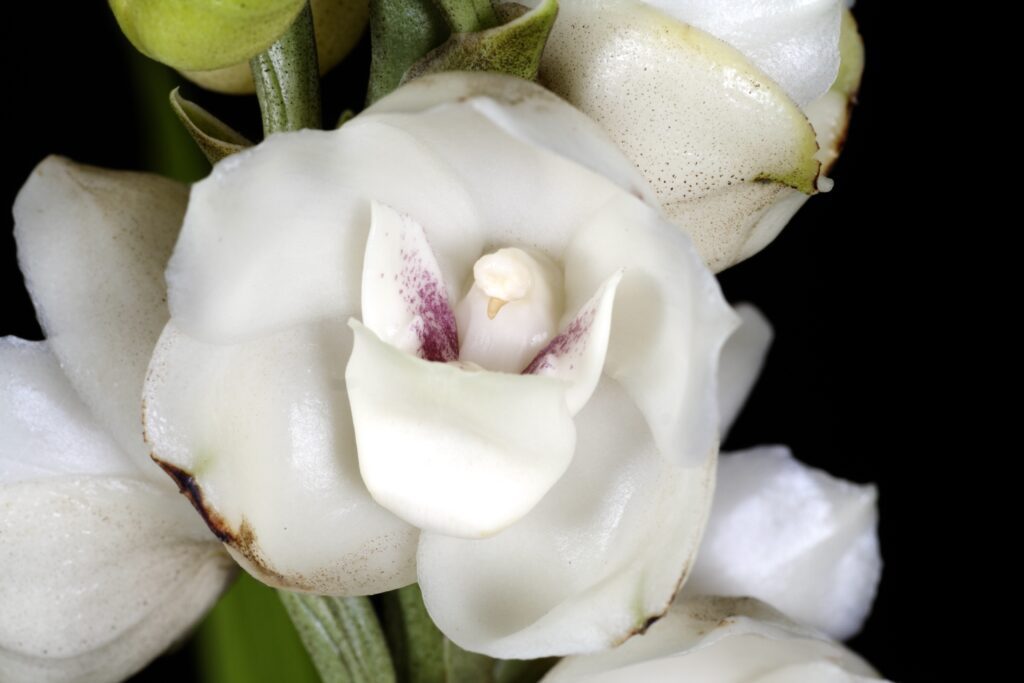

Look closely at the dove orchid and you’ll see what appears to be a delicate bird tucked between its petals (hence the name). The national flower of Panama, the Peristeria elata is often called the flower of the Holy Spirit.
Fun fact: The dove orchid belongs to the orchid species Peristeria, which means dove in Greek.
Bunny Succulent (Monilaria Obconica)
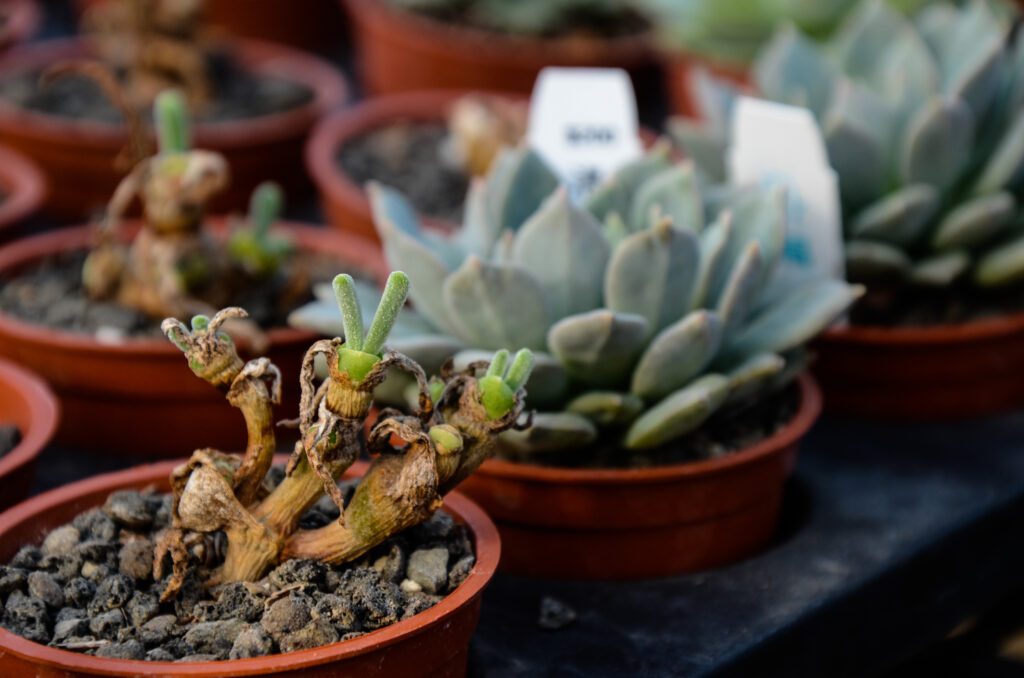

Affectionately nicknamed the “bunny ear succulent,” Monilaria obconica starts out with a fuzzy green leaf pair that resembles rabbit ears. As the plant grows, the ears become longer and flower into pretty petals.
Fun fact: The Monilaria obconica produces solitary flowers during summertime.
White Egret Orchid (Habenaria Radiata)
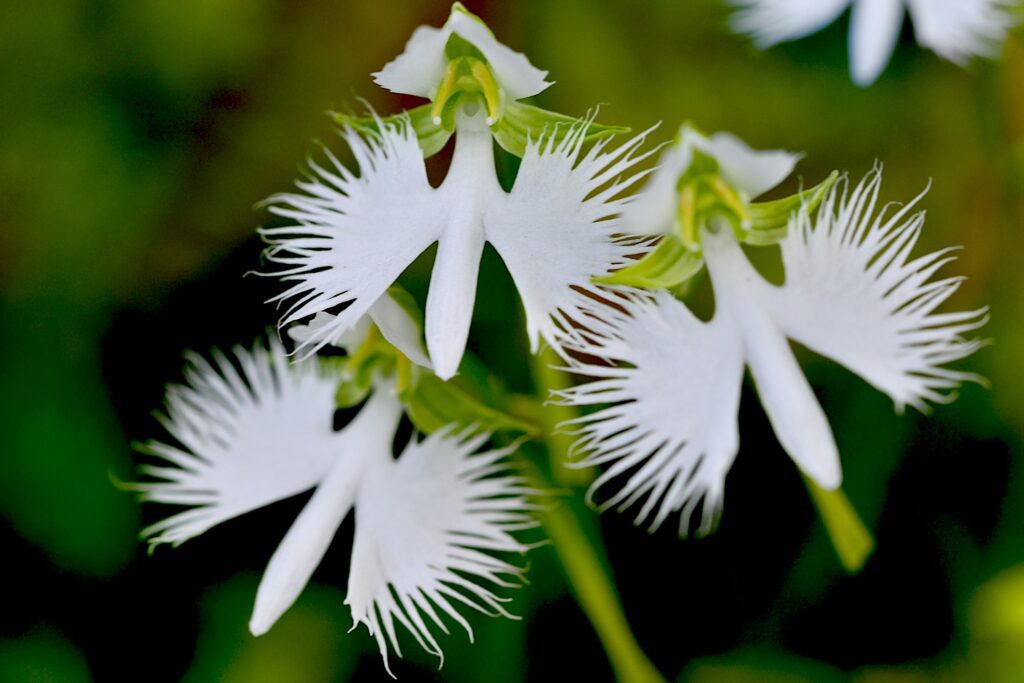

Native to Japan, Korea, Russia, and China, the white egret orchid is known for its uncanny resemblance to the bird it’s named after. With petals that look like outstretched wings, this flower is a showstopper.
Fun fact: A 2022 study found that the white egret evolved “as a stabilizer for the hawkmoth while it pollinates the plant, resulting in better seed production.”
Tiger Orchid (Grammatophyllum Speciosum)
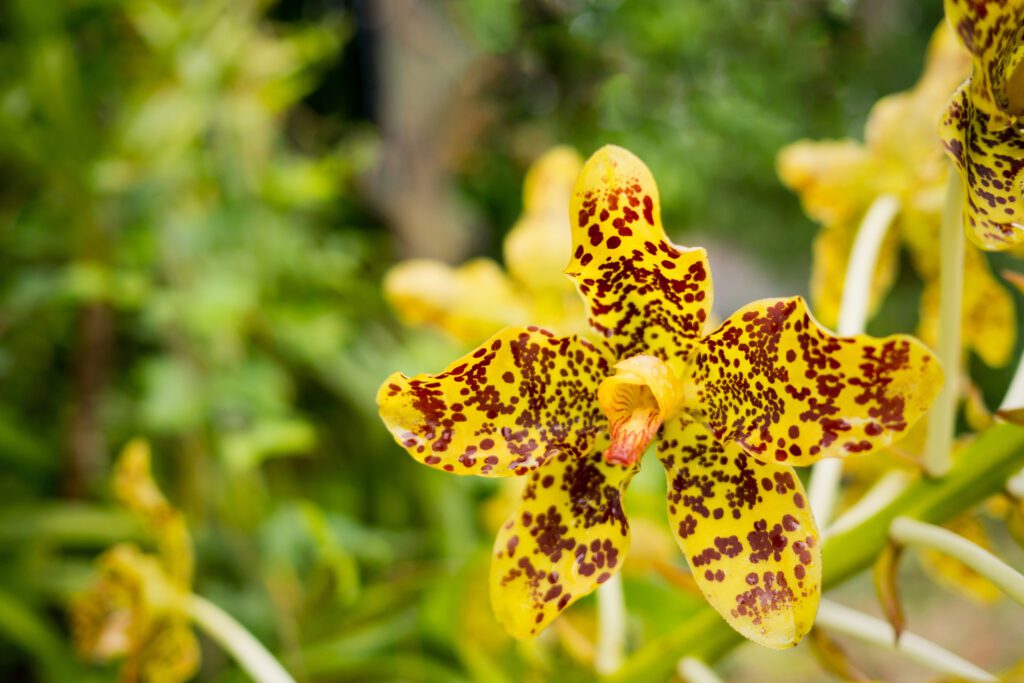

With their yellow color and reddish-brown spots, it’s no surprise these are dubbed tiger orchids. Native to Singapore, the flowers are notable for their tiger stripe-like markings as well as their size. According to the country’s national parks board, the species is the largest orchid in the world and can weigh up to 4,000 pounds as a clump (about as much as six large tigers!).
Fun fact: Other nicknames for the tiger orchid include queen of the orchids, giant orchid, and lion orchid.
Monkey Orchid (Dracula Simia)
When Dracula simia blooms, a bizarrely striking monkey face materializes. These flowers are indigenous to the cloud forests of Peru and southeastern Ecuador, and there are around 100 varieties within the Dracula genus — so if you’re in the area, keep an eye out for little monkey faces peeking out of the greenery.
Fun fact: Monkey orchids smell like oranges.
Green Bird Flower (Crotalaria Cunninghamii)
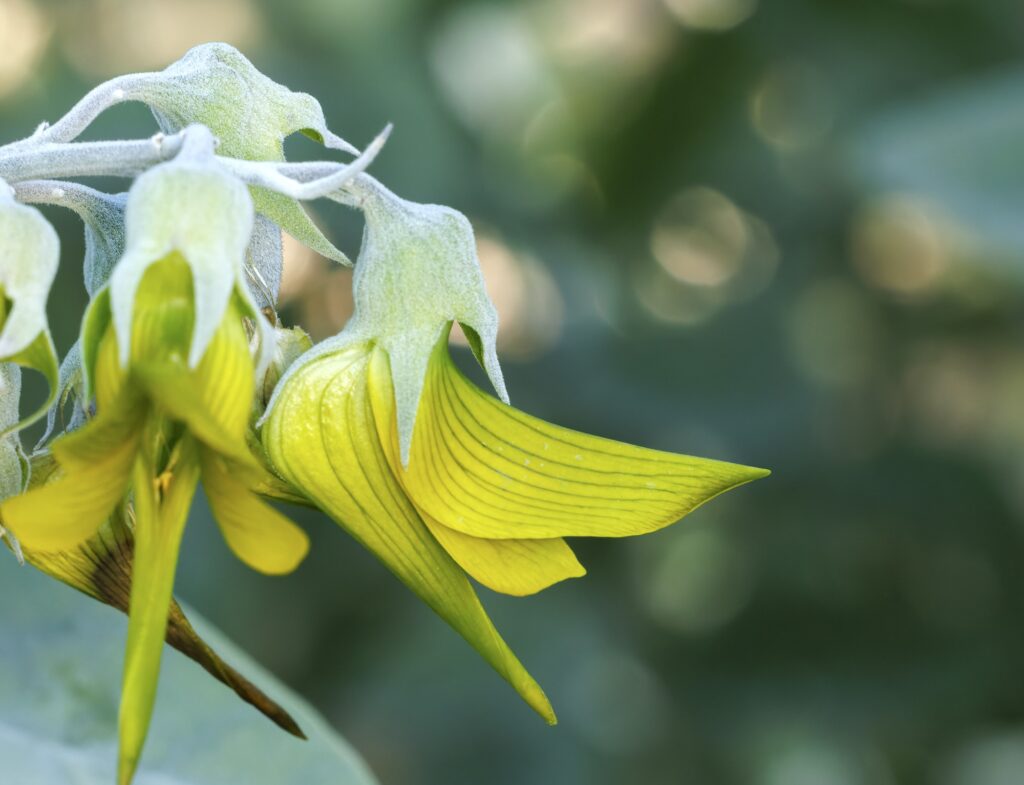

Native to northern Australia, the Crotalaria cunninghamii starts out as a simple shrub, then produces bright green flowers that look like hummingbirds with beaks attached to the stalk. Magical.
Fun fact: The genus is named Crotalaria after the Greek word for rattle, because its plants’ seeds rattle in their pods.
Snake Plant (Dracaena Trifasciata)
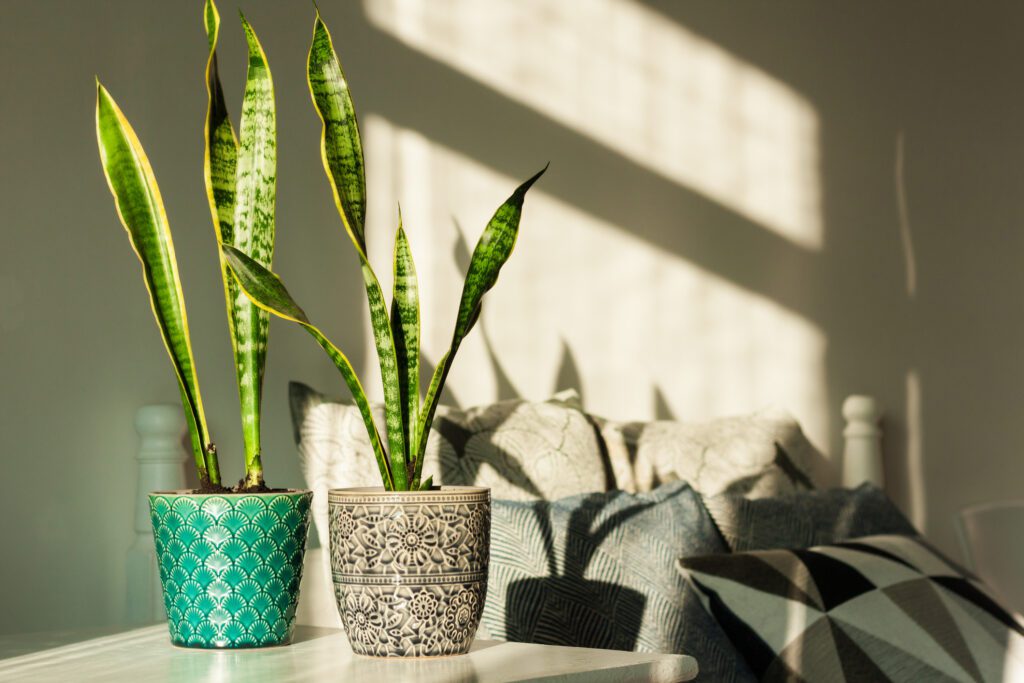

The snake plant, officially known as Dracaena trifasciata, gets its nickname from its long, stiff, pointed leaves that often have a scaly-like texture. Per Healthline, this plant has a history of being used in the practice of feng shui. “The Chinese love the snake plant for its ability to absorb negative energy,” botanist Halina Shamshur told the website.
Fun fact: When snake plants are grown indoors, they can reach up to 5 feet, about the size of some pythons.
Blue Butterfly Bush (Rotheca Myricoides)
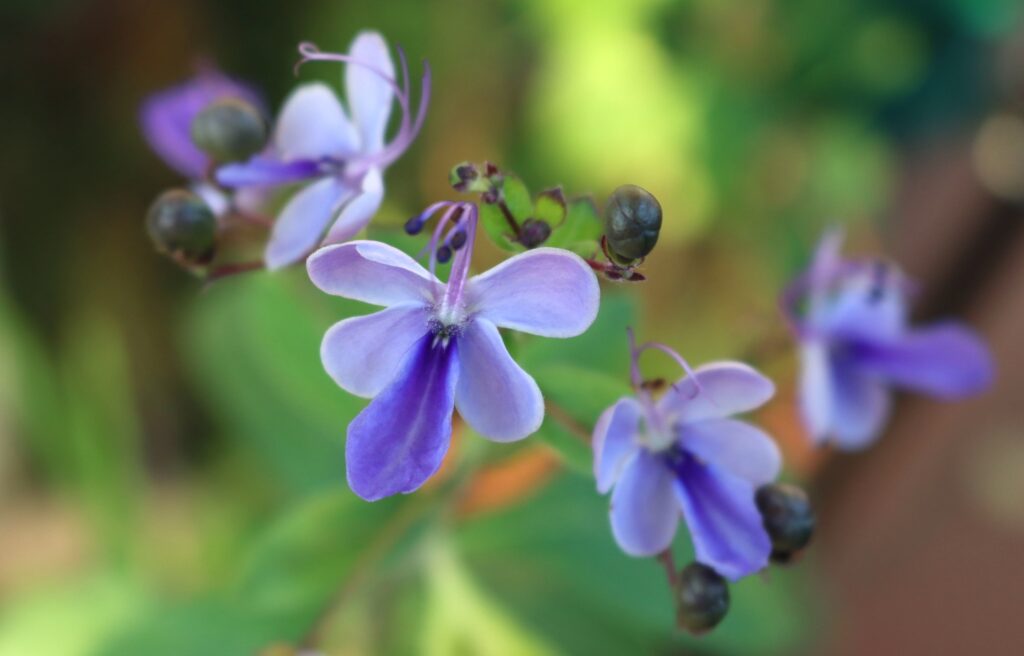

Petals that look like dainty bluish-violet butterfly wings make this flower a sweet sight to behold. Native to eastern Africa, the blue butterfly bush blooms from June to September and also produces black, fleshy fruit.
Fun fact: Fittingly, butterflies (and bees) are attracted to the blue butterfly bush. How cool is that?
Chenille Plant (Acalypha Hispida)
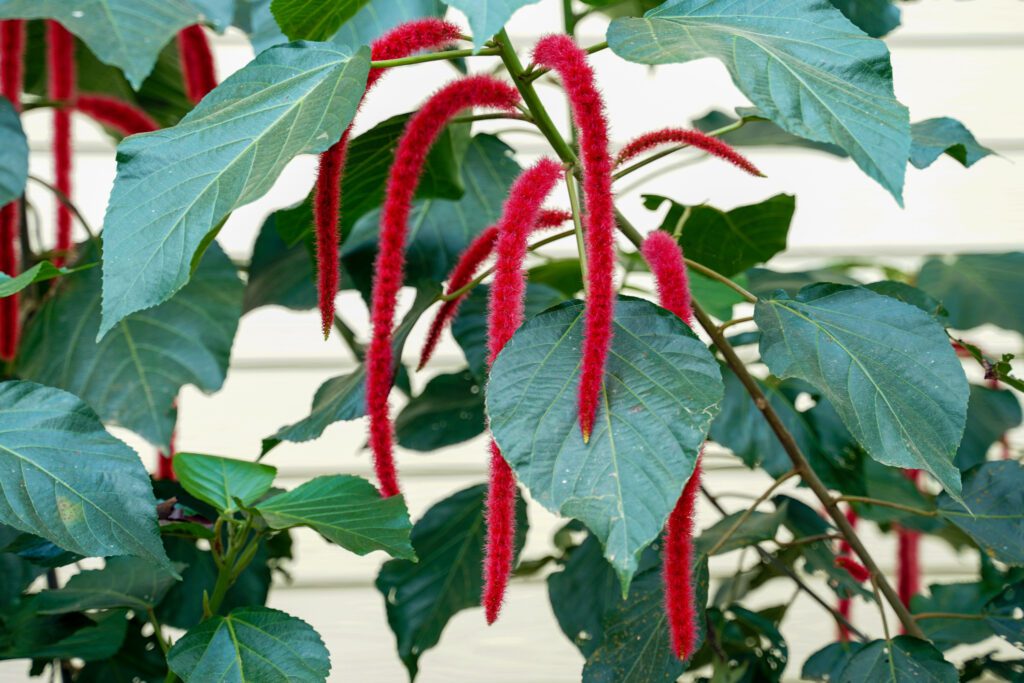

Chenille plants feature long, tassel-like flowers (called “red catkins”) that resemble fuzzy yarn — or red caterpillars. These plants are native to the South Pacific and named after the French word for caterpillar.
Fun fact: According to the University of Wisconsin-Madison, the female plants are usually preferred for ornamental purposes because the male flowers are “not showy.”
Panda Face Ginger (Asarum Maximum)
Shades of black and white make the Asarum maximum look like a darling panda. Like the mammals, these unique flowers can also be found in China, and they start to bloom in early spring. But you’ll have to really search for those panda faces, as they’re often hidden behind foliage.
Fun fact: These flowers reportedly smell like mushrooms.
Cahaba Lily (Hymenocallis coronaria)
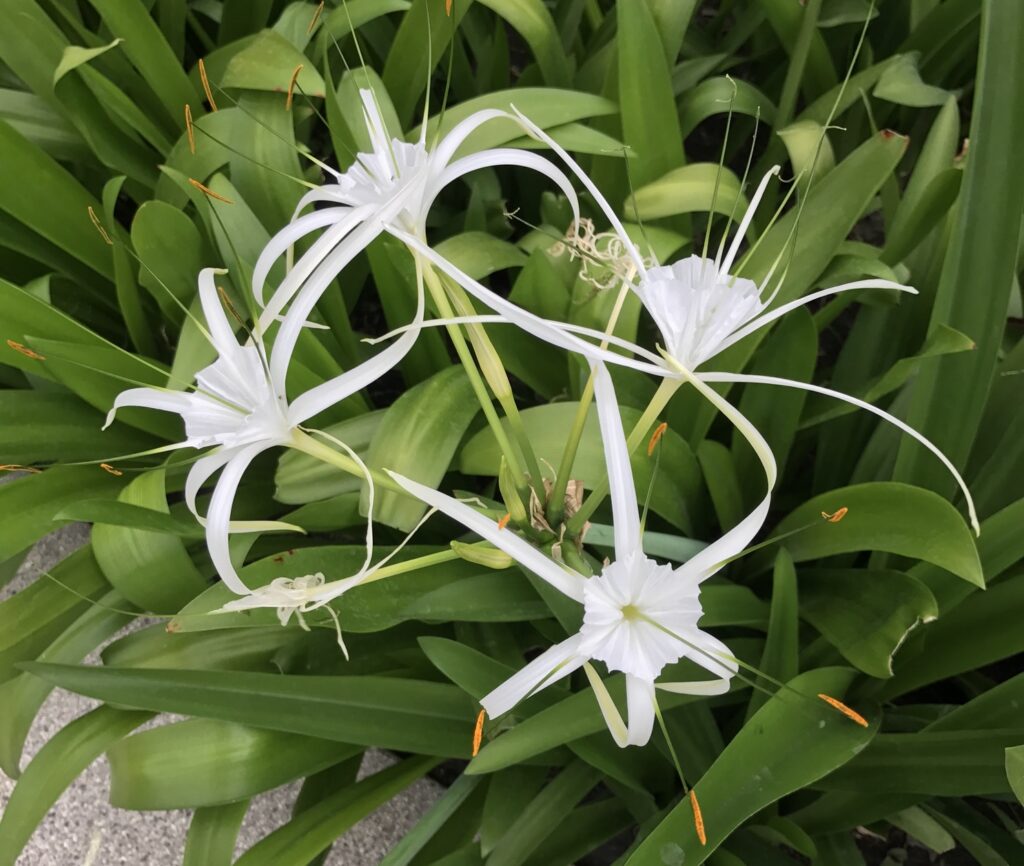

Cahaba lilies have petals that stretch out and distinct stamens, giving the flower a spider-like look. They grow in Alabama, Georgia, and South Carolina and can only survive in a habitat with “swift-flowing water over rocks and lots of sun,” according to the Encyclopedia of Alabama.
Fun fact: These flowers open in the early evening — and each one blooms for about 24 hours.
Passionflower (Passiflora Incarnata)
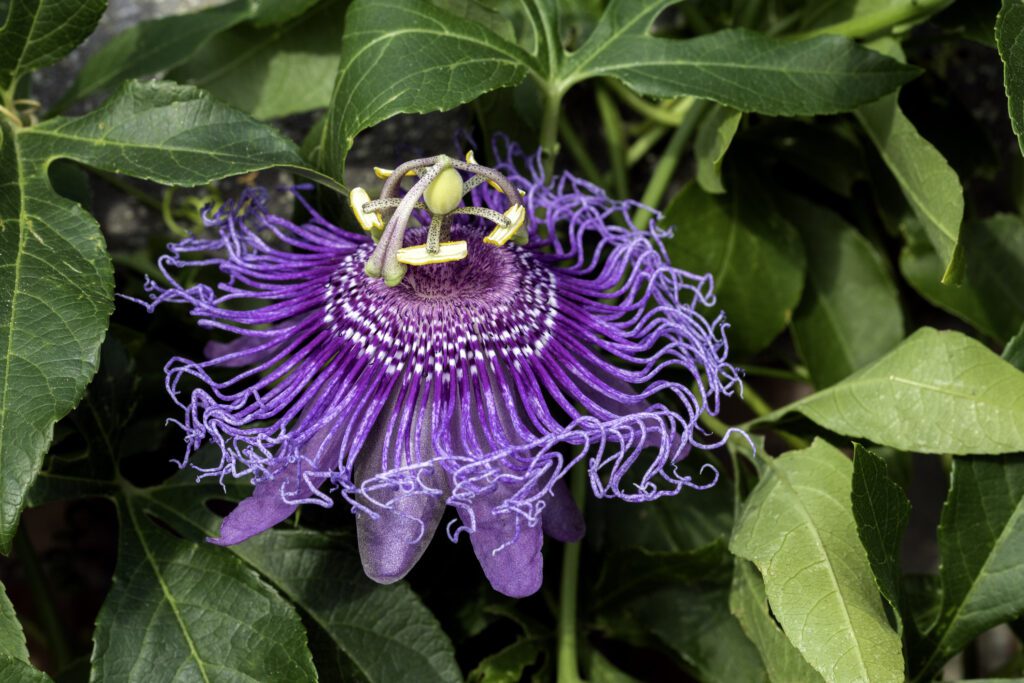

Resembling a jellyfish or other sea creature, this beauty is a climbing vine with purple and white flowers. Vibrant in appearance, its rich color and stringy filaments make the passionflower look like something we wouldn’t be surprised to spot floating under the waves.
Fun fact: This flower is edible and sometimes used to support sleep and reduce anxiety in adults.
Bird of Paradise (Strelitzia Reginae)
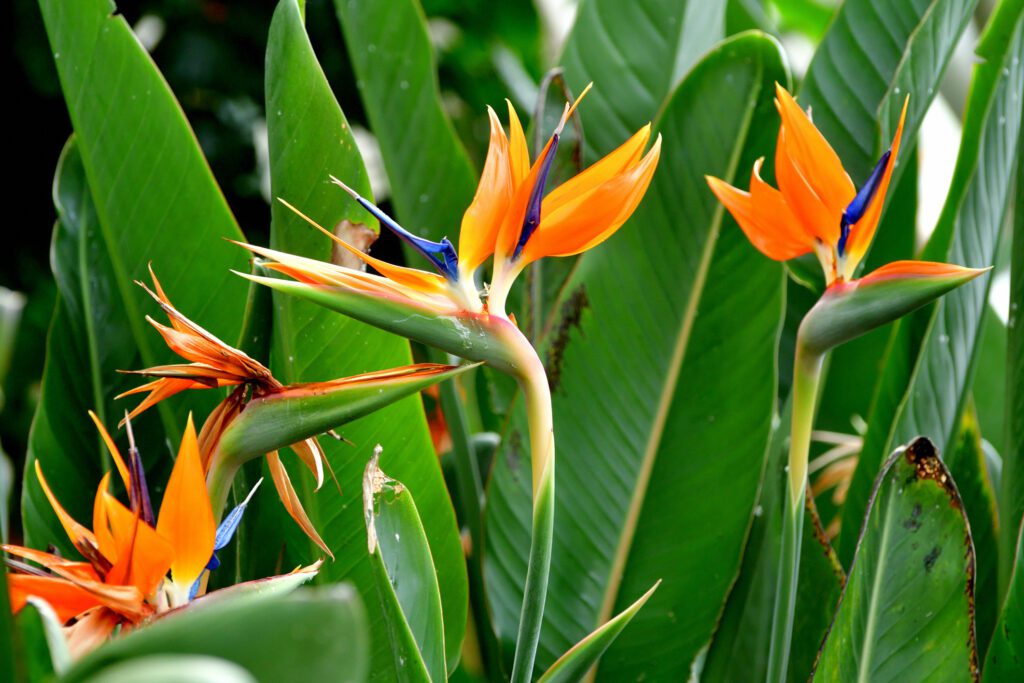

Much like birds, the bird of paradise flower symbolizes freedom and joy. Native to southern Africa but cultivated all over the world, the vibrant flowers resemble the head of a bird peeking out from the foliage — and in full bloom, you might even see several birds stretching their necks in different directions.
Fun fact: The bird of paradise is the official flower of Los Angeles.
Leopard Lilies (Lilium Pardalinum)
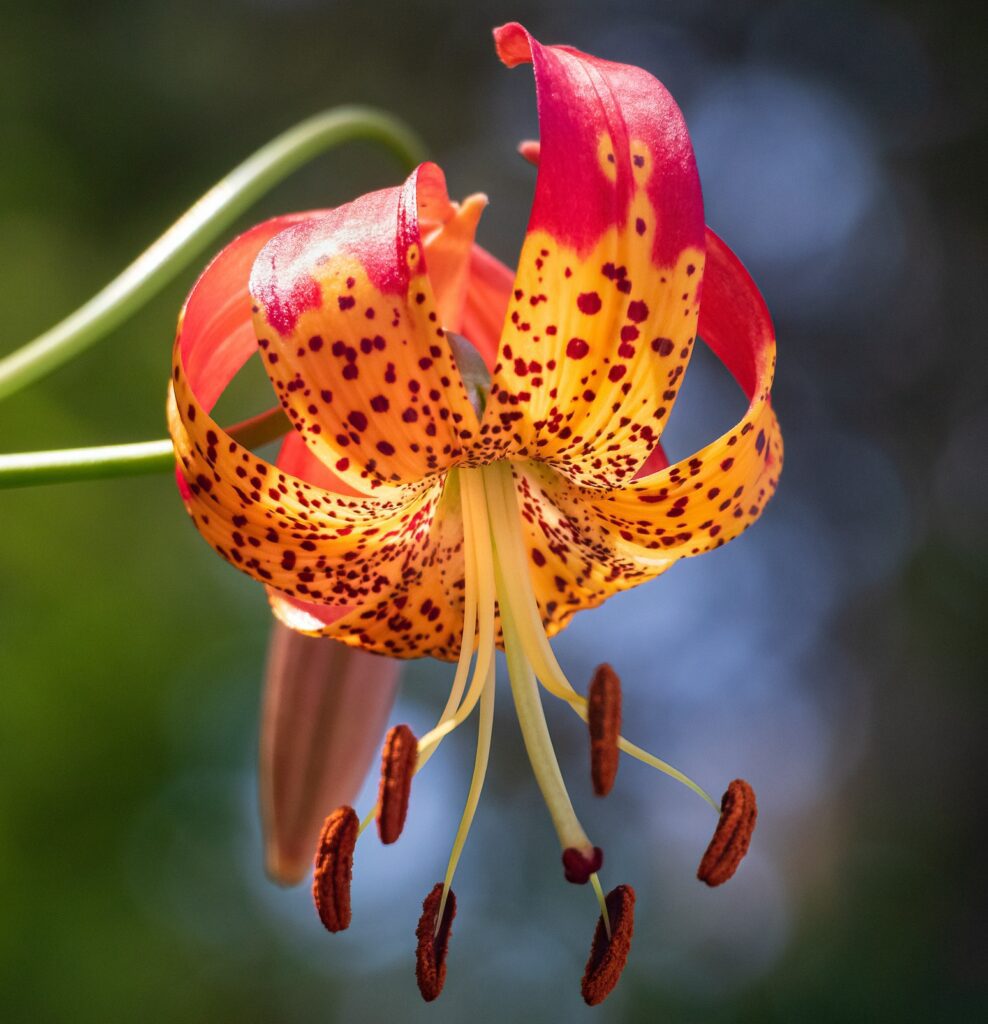

With reddish-brown spots on a bell-shaped petal, it’s apparent why these flowers are nicknamed after their animal look-alike. Native to California and southern Oregon, leopard lilies bloom during summer and can be found in bogs, moist meadows, and woodlands.
Fun fact: Leopard lilies usually only bloom for a few weeks, so if you spot them, be sure to savor the sighting!
Below is a bonus photo of a leopard lily taken by this writer while hiking John Muir Trail in California.
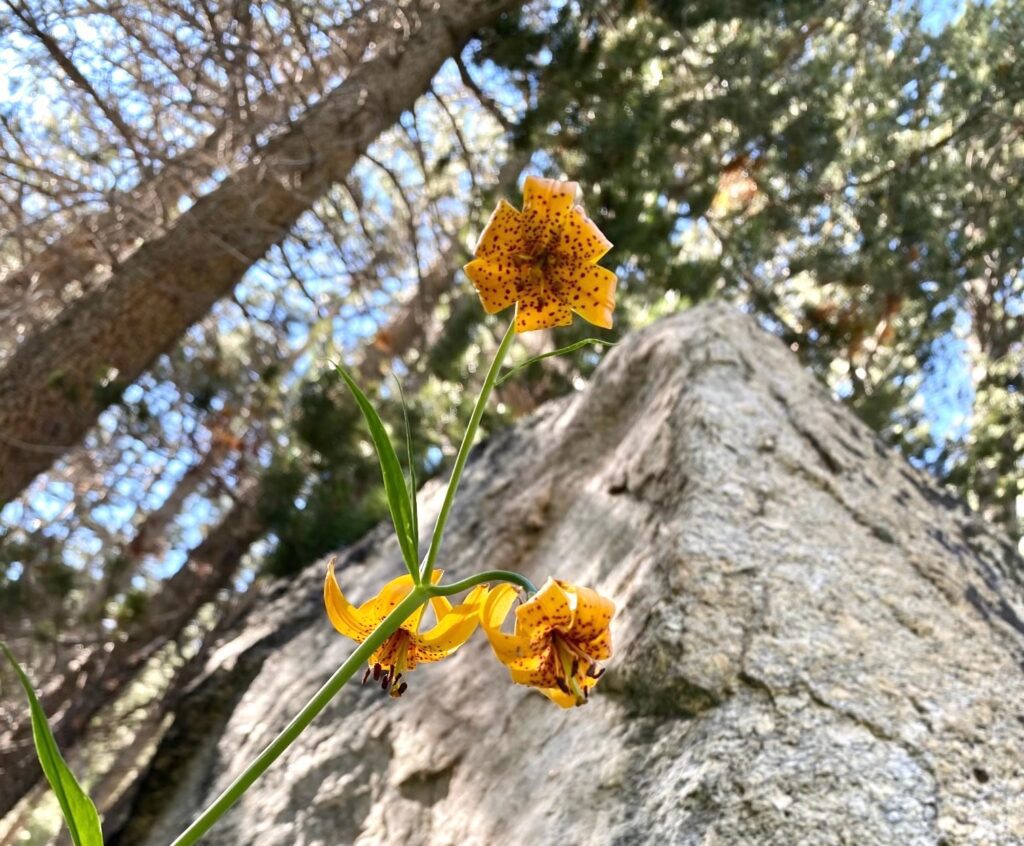

RELATED: Houseplants for Your Health: 7 Indoor Plants That Can Improve Your Well-Being
